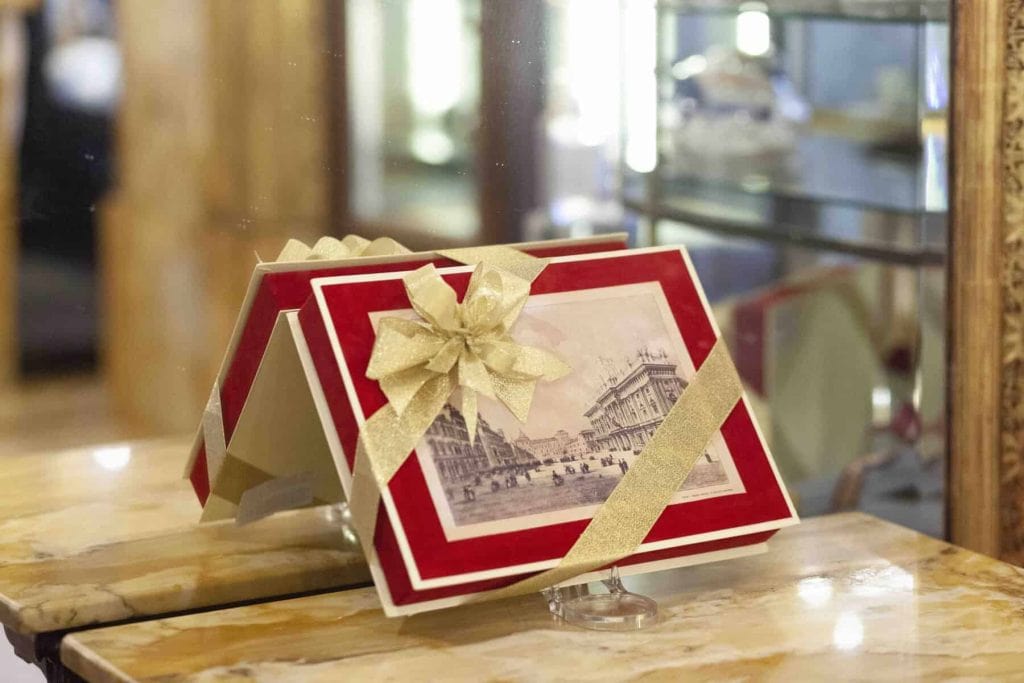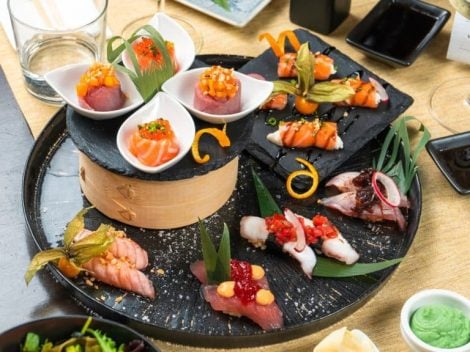Turin is the city with the highest number of historic cafés that have remained intact over time, adorned with mirrors, gold, and boiseries. A record: of the 16 establishments that are part of the Historic Cafés Route in Italy, officially recognized by the Council of Europe, ten are in Turin. Among these, Baratti & Milano, in the central Piazza Castello, is almost an institution. It all began in the mid-19th century when confectioners, chocolatiers, and liqueur makers began opening shops in Turin: artisans who produced sweets, pastilles, and chocolates, making the city famous. After all, as early as 1739, Turin was home to a University of Confectioners, Distillers, and Liqueur Makers, one of the oldest guilds in Italy. Anyone wishing to learn the art of confectionery and chocolate making had to come to Turin. That is precisely what Edoardo Milano and Ferdinando Baratti did, moving from Canavese to the city in search of fortune. Together, in 1858, they took over a shop at No. 43 Via Dora Grossa (now Via Garibaldi, then named for a doira, a small canal that ran through the center, used to clean the street and provide water in case of fires). Here they dedicated themselves to confectionery products and the trade of vermouth, syrups, wines, and liqueurs. A stroke of luck: Edoardo Milano became engaged to a young lady from a good family, who brought a substantial dowry, allowing him to travel to Paris, where he acquired machinery and specialized in certain confectionery and chocolate-making processes.

From 1875, in Galleria Subalpina
Baratti & Milano quickly became famous, and in 1868 the duo founded the Baratti & Milano Company, which received the privilege of using the Savoy coat of arms as an official “supplier of the Royal Household.” It was a leap into the heart of Turin's high society, marked by a historic turning point: in 1875, Baratti & Milano moved to the Galleria Subalpina, newly inaugurated in Piazza Castello, at the heart of the city’s social scene. Newspapers of the time described the venue as “stunning.” At 163 square meters and 25 meters in length, it was a triumph of art, illuminated by no fewer than 44 gas flames. All mirrors, marble, gold, and crystal, it was inaugurated on the evening of 1 February 1875. The confectionery became a mandatory stop for the nobility and bourgeoisie, establishing itself as the premier venue of the Belle Époque, where even ladies could stop for coffee, chocolate, and pastries.

Baratti in Gozzano’s verses
Guido Gozzano, a regular at the café (which Turinese affectionately call “Baratti-and-that’s-it”), confessed to being “in love with all the ladies who eat pastries in the confectioneries,” and in July 1907, he penned his poem Le Golose (The Sweet-Toothed Ladies) right at the tables of Baratti & Milano. The verses were first published on 28 July 1907 in the Gazzetta del Popolo:
Why is it not permitted to me, / oh untimely law! / to draw near to you, / and kiss you one by one, / oh lovely untouched mouths / of young ladies, / kissing you in the flavor / of cream and chocolate?
Poetry but also technology: in the same month, July 1907, the double-bow wrapping for their classic candies was registered with the Ministry of National Economy. This marked the creation of an endless range of sweets: hard and soft, filled and chewy; jellies and pastilles; flavored with tropical fruits, citrus, Alpine herbs, and coffee; thirst-quenching, balsamic, digestive, and fizzy; round, square, rectangular, multicolored; both unwrapped and elegantly packaged.
The confectionery hall was no longer sufficient to accommodate the growing clientele, prompting an expansion. Sculptor Edoardo Rubino and architect Giulio Casanova, a professor at the Accademia Albertina, undertook the work. The revamped café was inaugurated just before the official opening of the 1911 International Exhibition in Turin. The venue became even more opulent: at the entrance, a massive marble counter for serving beverages; inside, a grand hall for pastry, café, and wine tastings. The interior boasted intricate decorations blending 19th-century and Art Nouveau styles: inlaid marble floors, rosette ceilings, paintings, mahogany furnishings, silk fabrics, and crystal chandeliers. Outside, the confectionery was framed by yellow Siena marble with bronze bas-reliefs.
A star of cinema and literature
With a commercial network of 45 representatives in Italy and 12 abroad, and a catalogue of over 150 products, Baratti & Milano began exporting candies, chocolate, jams, marrons glacés, and wine-based aperitifs worldwide from the 1930s, reaching Switzerland, the United States, Argentina, and Egypt. In 1940, the Piazza Castello confectionery entered cinema history: many scenes of Addio Giovinezza, the cult film by Ferdinando Poggioli based on the play by Sandro Camasio and Nino Oxilia, were filmed on the premises.
World War II struck hard: the Via Castelfidardo factory was almost entirely destroyed, and in the summer of 1943, the Piazza Castello confectionery was also hit during an air raid. Yet, against all odds, the venue rose again from the ashes, meticulously restored to its original splendor. By 1958, for its centenary, advertising legend Armando Testa created an iconic campaign for Baratti & Milano featuring Gina Lollobrigida’s portrait on their candy tins—a legend within a legend.

The café also appears in the cult mystery novel La donna della domenica (The Sunday Woman) by Fruttero & Lucentini: the opening scene with architect Garrone takes place in the main hall. Its connection to cinema endures: Baratti & Milano was the official sponsor of the National Cinema Museum of Turin for last October’s The World of Tim Burton exhibition. A special, numbered box of the famous Cremini chocolates—invented by Baratti & Milano in the early 1900s—was crafted for the occasion, featuring original designs by the director.

A return to the future
Today, the venue remains intact, a time machine that also looks to the future. 2025, marking its 150th anniversary, will bring major innovations. On 28 January 2025, a new evening restaurant space will open with Michelin-starred chef Ugo Alciati, blending historical tradition with modernity. Art will be a common theme throughout the year: starting in January 2025, Baratti & Milano will launch a contemporary art project titled Vetrinista sarà lei, curated by Helga Faletti and Luca Beatrice. Five contemporary artists—Marco Lodola, Elena Salmistraro, Massimo Giacon, Nicola Bolla, and Maurizio Vetrugno—will transform the café’s windows into art exhibitions, celebrating the brand’s cultural and historical identity.
For Valentine’s Day 2025, a new line of handmade chocolate pralines—five unique varieties—will be exclusively available at the historic venue. Another 2025 novelty includes transforming the small kiosk in front of Baratti & Milano into a gelato stand offering artisanal cream and fruit gelatos. Meanwhile, for Christmas 2024, the café will showcase its historic product line, specially relaunched for the festive season, while a new collaboration with Turinese artist Elisa Seitzger is already underway for the 2025 holiday collection. Art befits Baratti, as it has for 150 years.


 A Calabrian wine triumphs in the New York Times: among the best of 2024
A Calabrian wine triumphs in the New York Times: among the best of 2024 The 13 best Sauvignon wines from Alto Adige chosen by Gambero Rosso (with the White Wine of the Year)
The 13 best Sauvignon wines from Alto Adige chosen by Gambero Rosso (with the White Wine of the Year) It's the year of Barbera. We recommend an excellent one with the best value for money
It's the year of Barbera. We recommend an excellent one with the best value for money Italy copied France: this is how panettone was born
Italy copied France: this is how panettone was born The best Orange Wines to gift this Christmas, selected by Gambero Rosso
The best Orange Wines to gift this Christmas, selected by Gambero Rosso






